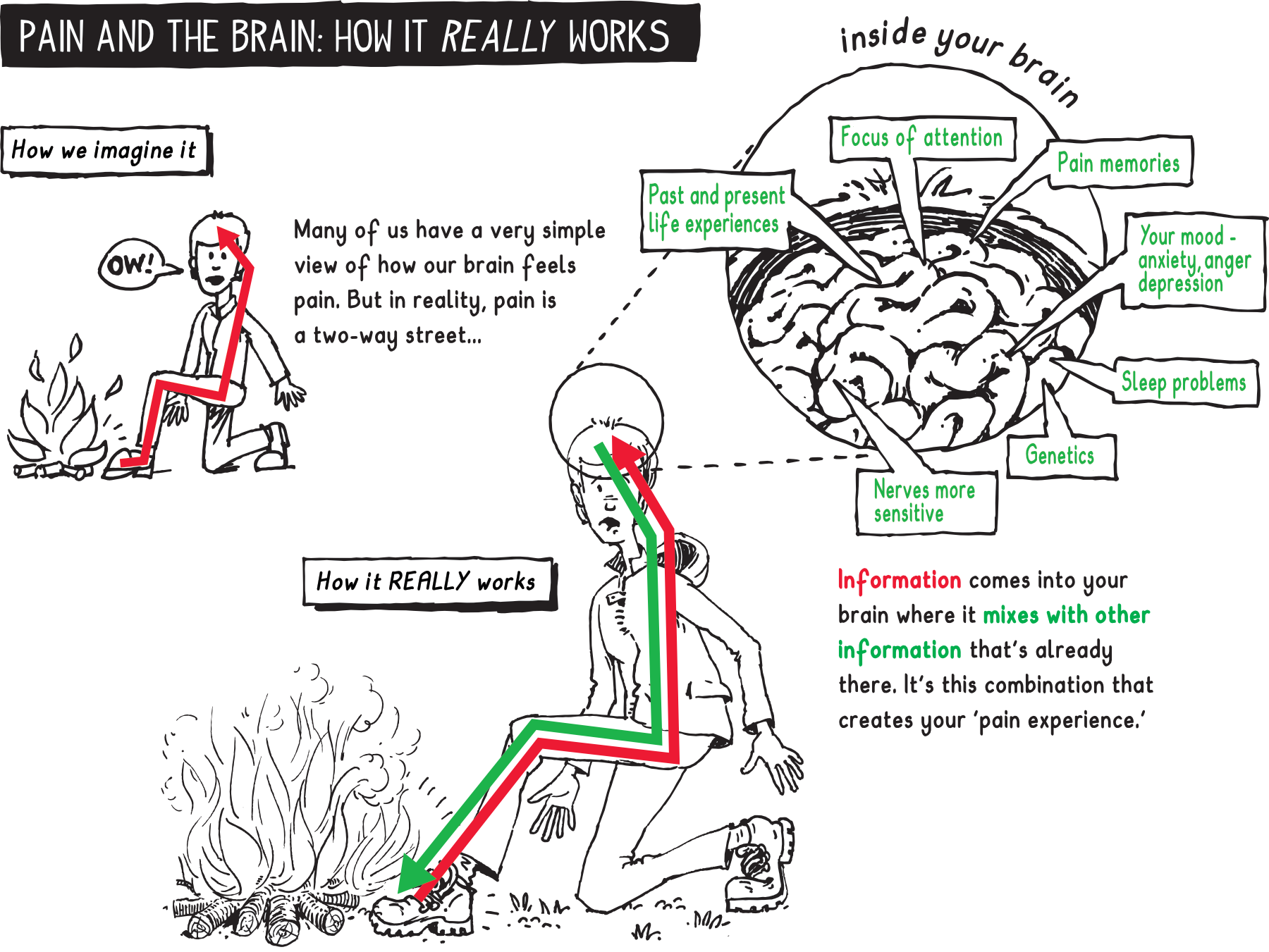Home | Explore our resources | Popular self-management skills | Understanding pain
Understanding pain
Persistent pain is very different from the kind of pain you experience when you touch something hot or injure yourself. It goes on long after the original cause, and affects different parts of the brain and nervous system.
Understanding pain in less than five minutes
Here’s a short video that helps explain how pain works, featuring the well known cartoon character ‘Brainman.’
Pain and the brain – how it really works
Pain is one of our protective systems. It is designed to keep us safe and well, and it’s controlled by the brain.
Our brain decides when to protect us based on two types of information:
-
information it receives from areas of the body, and
-
information from elswhere including pain memories, your mood, past experiences and more (see illustration)
If the brain decides it needs to protect us, pain will happen.
In persistent pain, even though the original trigger for the pain may have stopped, the other factors are still there, so the brain becomes over-protective and keeps the pain going.
It’s a bit like the brain struggling to turn down the ‘volume control’.

 What is self management?
What is self management? Using our resources
Using our resources About us
About us Always trusted, always free
Always trusted, always free Explore our resources
Explore our resources Ten Footsteps programme
Ten Footsteps programme Professional tools
Professional tools Training for practitioners
Training for practitioners Our newsletter
Our newsletter Inspire – our blog
Inspire – our blog